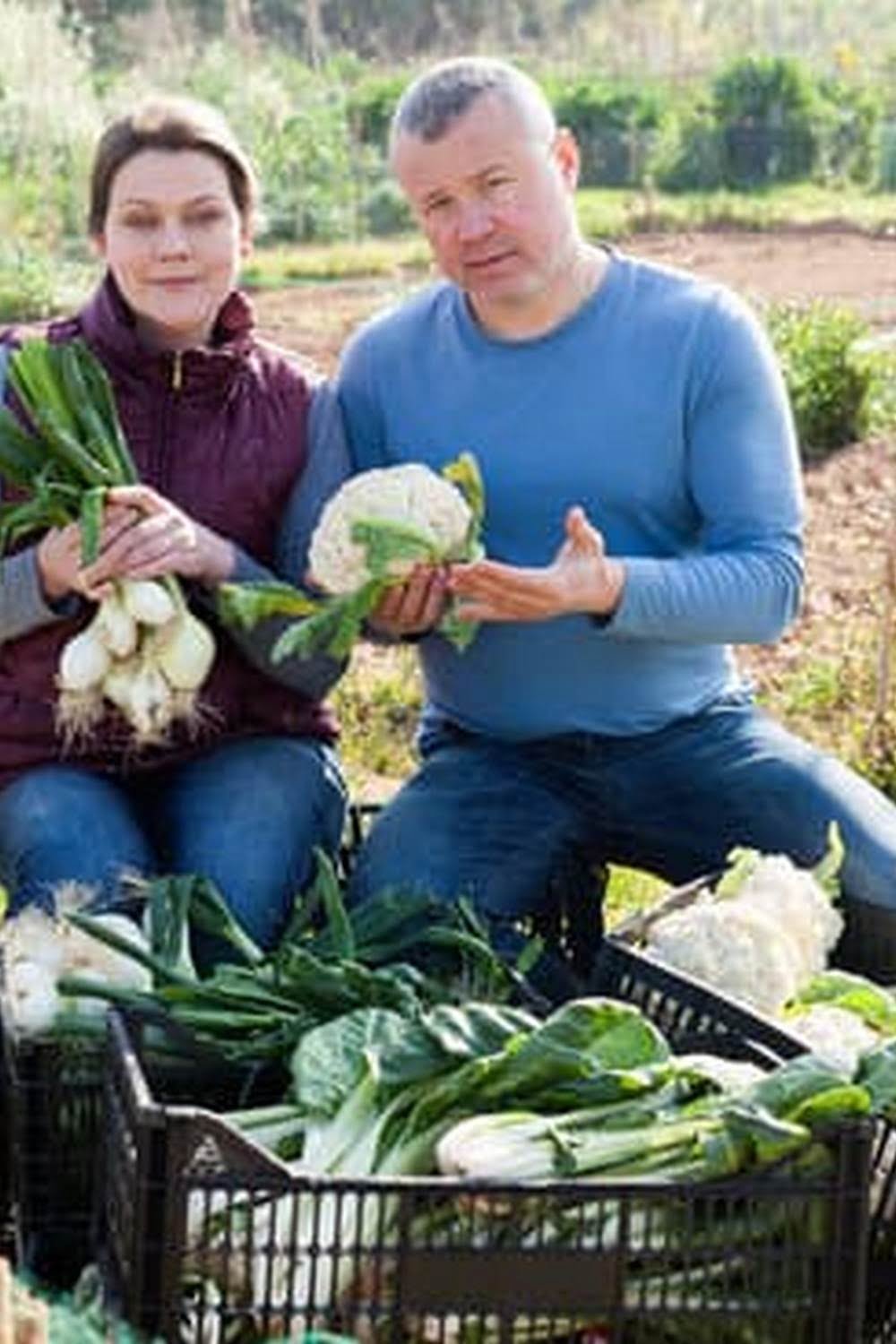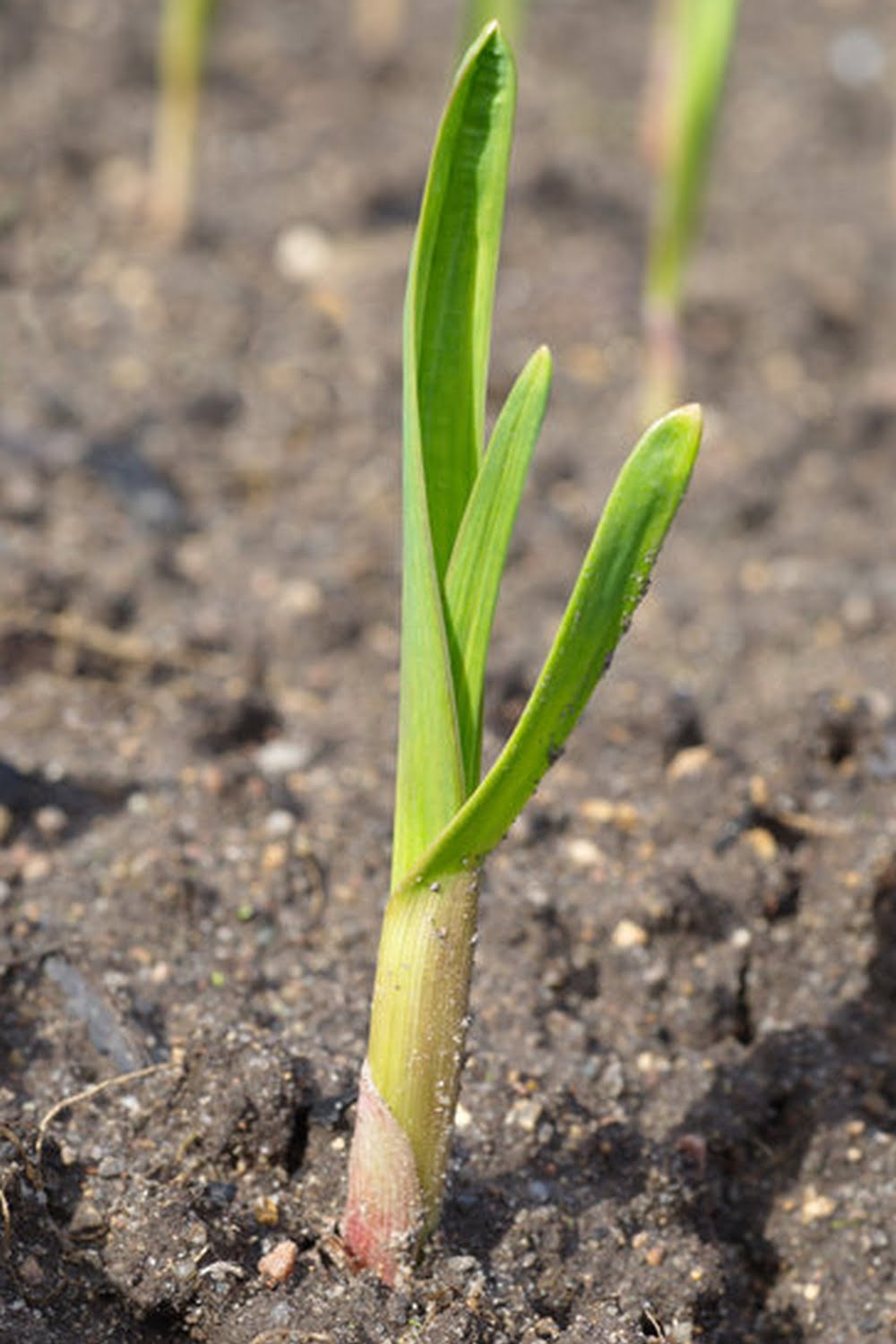When it comes to growing a successful vegetable garden, providing the best light for vegetable gardens is essential. The right amount and type of light are crucial for the healthy growth and development of plants, as it directly impacts processes such as photosynthesis and nutrient absorption. Understanding this importance can help gardeners make informed decisions when it comes to optimizing light conditions for their vegetable gardens.
In this article, we will explore the various types of light for vegetable gardens, including natural sunlight and artificial grow lights. We will also delve into the specific light needs of different vegetables, such as sun-loving plants that thrive in direct sunlight and shade-tolerant plants that fare better in lower light conditions.
Additionally, we will discuss the best natural light conditions for vegetable gardens, as well as how to choose the most suitable artificial grow lights, such as LED, fluorescent, and HID options.
Furthermore, we will provide valuable tips for optimizing light distribution in your vegetable garden, including positioning techniques, the use of reflective surfaces, and implementing light timers. Additionally, we will address common light-related issues that may arise in vegetable gardens, and offer best practices for providing consistent and adequate light through seasonal adjustments, supplemental lighting methods, and effective monitoring techniques.
Whether you’re a seasoned gardener or just starting out with your vegetable garden, understanding the role of light is fundamental to cultivating a thriving harvest.
Types of Light for Vegetable Gardens
When it comes to providing the best light for vegetable gardens, gardeners have the option of using natural sunlight or artificial grow lights. Each type of light has its advantages and considerations, so understanding the differences between the two can help make an informed decision for your vegetable garden.
Natural sunlight is often considered the ideal source of light for vegetable gardens. It provides a full spectrum of light that is essential for plant growth and development. Additionally, natural sunlight is readily available and cost-effective.
However, it’s important to consider factors such as orientation, duration, and intensity when utilizing natural sunlight for your vegetable garden. Sun-loving plants, such as tomatoes and peppers, thrive in direct sunlight, while shade-tolerant plants like lettuce and spinach prefer partial shade.
On the other hand, artificial grow lights offer flexibility and control over the light conditions in your vegetable garden. LED, fluorescent, and HID (high-intensity discharge) lights are popular options for indoor or supplemental lighting. LED lights are energy-efficient and produce little heat, making them suitable for a wide range of vegetables.
Fluorescent lights are affordable and work well for seed starting and growing leafy greens. HID lights are powerful and provide intense light output, making them suitable for larger indoor gardens.
In choosing between natural sunlight and artificial grow lights for your vegetable garden, it’s essential to consider the specific needs of your plants as well as environmental factors such as location and climate. Both types of light have their benefits and can be used in combination to provide consistent and adequate lighting for optimal plant growth.
Understanding the Light Needs of Different Vegetables
When it comes to vegetable gardening, understanding the specific light needs of different plants is crucial for a successful harvest. Some vegetables thrive in full sun, while others prefer shade or partial shade. By categorizing your plants into sun-loving and shade-tolerant varieties, you can ensure that each one receives the appropriate amount of light for optimal growth and productivity.
Sun-Loving Plants
Vegetables such as tomatoes, peppers, cucumbers, and squash are considered sun-loving plants. These crops thrive in full sunlight, which is typically defined as at least 6-8 hours of direct sunlight per day. When planning your garden layout, be sure to place these sun-loving vegetables in areas with maximum exposure to the sun. This will help promote strong growth, flowering, and fruit production.
Shade-Tolerant Plants
On the other hand, there are several vegetables that actually prefer or tolerate some shade. These include leafy greens like lettuce, spinach, kale, and arugula, as well as root vegetables such as carrots and beets.
While these plants still require some sunlight to thrive, they can generally perform well with 4-6 hours of direct or filtered sunlight each day. It’s important to provide them with enough light to support photosynthesis and healthy development without subjecting them to excessive heat or radiation.
By understanding the light requirements of different vegetables and grouping them accordingly in your garden space based on their preferences for sun exposure, you can create an environment that maximizes their growth potential. This approach also allows you to make efficient use of available natural light or artificial grow lights to provide the best possible conditions for all the plants in your vegetable garden.
Best Natural Light Conditions for Vegetable Gardens
When it comes to growing healthy and productive vegetables, light is a crucial factor that can greatly influence the success of your garden. Understanding the best natural light conditions for vegetable gardens is essential in ensuring that your plants receive the necessary energy for optimal growth and development. This section will delve into the importance of orientation, duration, and intensity of natural light for vegetable gardens.
The orientation of your vegetable garden plays a significant role in maximizing natural light exposure. Ideally, the garden should be situated in an area where it can receive ample sunlight throughout the day. In the Northern Hemisphere, a south-facing orientation is preferable as it allows for maximum sunlight exposure from sunrise to sunset. However, in the Southern Hemisphere, a north-facing orientation would be ideal for the same reason.
In addition to orientation, the duration of natural light exposure is also crucial for vegetable gardens. Most vegetables require at least 6-8 hours of direct sunlight per day to thrive. It is important to consider any potential obstructions such as tall buildings or trees that may cast shadows over your garden and reduce sunlight exposure. If necessary, strategically pruning surrounding vegetation or relocating your garden to a sunnier spot can help ensure adequate light duration for your vegetables.
Furthermore, understanding the intensity of natural light is vital for successful vegetable gardening. Different plants have varying light intensity requirements, with some requiring full sun while others prefer partial shade. Intensity can be affected by factors such as cloud cover, air pollution, and seasonal changes. Monitoring the intensity of natural light in your garden and making adjustments accordingly can help provide the best light conditions for your specific vegetables.
By carefully considering the orientation, duration, and intensity of natural sunlight in your vegetable garden, you can create optimal growing conditions for your plants. However, in cases where natural light may be limited or insufficient due to geographic location or other factors, supplemental lighting options such as LED grow lights may need to be considered for providing consistent and adequate light for your vegetable garden.
Choosing the Best Artificial Grow Lights for Vegetable Gardens
When it comes to providing the best light for vegetable gardens, natural sunlight is always the ideal choice. However, in some cases, especially for indoor or shaded gardens, artificial grow lights may be necessary to supplement the available light. There are several options for artificial grow lights, with LED, fluorescent, and HID being the most common choices.
LED grow lights are known for their energy efficiency and flexibility. They produce very little heat, which can be beneficial for indoor gardens where temperature control is important. LED lights also have a long lifespan and can be customized to provide specific light spectrums that are optimal for different stages of plant growth. They are a popular choice among gardeners looking for a reliable and low-maintenance lighting option.
Fluorescent grow lights are another popular choice for vegetable gardens. They are easy to install and come in different sizes and shapes to fit various gardening setups. While not as energy-efficient as LED lights, fluorescent lights still provide a good spectrum of light that is suitable for vegetable growth. They are also more affordable than LED lights, making them a practical option for gardeners on a budget.
HID (high-intensity discharge) grow lights emit intense light that covers a broad spectrum ranging from blue to red wavelengths. While they are effective in stimulating plant growth, HID lights can generate a significant amount of heat and require proper ventilation to prevent overheating. They are often used in commercial growing operations but can also be suitable for larger indoor vegetable gardens where high light intensity is needed.
| Artificial Grow Light Type | Advantages |
|---|---|
| LED | Energy efficient, customizable light spectrum, low heat production |
| Fluorescent | Easy to install, affordable, good light spectrum |
| HID | Intense light spectrum, effective for plant growth |
Overall – whether you choose LED, fluorescent, or HID grow lights for your vegetable garden – it’s essential to consider factors such as energy efficiency, light intensity, and customization options based on your specific vegetable plants’ needs. Investing in the right artificial grow lights will ensure that your vegetable garden receives consistent and adequate lighting throughout its growth stages.
Tips for Optimizing Light Distribution in Your Vegetable Garden
Positioning your vegetable garden in the right location is crucial to maximizing natural light. The ideal positioning for a vegetable garden is one that receives at least 6-8 hours of direct sunlight each day.
If you have limited outdoor space, consider placing your garden in an area that gets the most sunlight, whether it’s in your backyard, on a rooftop, or even on a balcony. Additionally, take into account the orientation of your garden beds to ensure that they are facing the sun for the majority of the day.
In addition to proper positioning, using reflective surfaces can help optimize light distribution in your vegetable garden. By placing reflective materials such as Mylar or white plastic around your garden beds, you can redirect sunlight onto the plants from various angles, ensuring that every part of the garden receives adequate light. This is especially important for gardens with limited access to direct sunlight or for plants growing in shaded areas.
Another way to optimize light distribution in your vegetable garden is by using light timers. Light timers can be used with artificial grow lights to regulate the amount of light your plants receive each day. This ensures that they get consistent and adequate lighting, especially during seasons with shorter daylight hours. By using light timers, you can mimic natural light cycles and provide your vegetables with a stable and reliable source of artificial light when needed.
| Optimizing Light Distribution | Information |
|---|---|
| Ideal Sunlight Duration | 6-8 hours of direct sunlight each day |
| Reflective Materials | Mylar or white plastic can help redirect sunlight onto plants |
| Light Timers | Regulate the amount of artificial light received by using light timers to mimic natural light cycles |
Common Light-Related Issues in Vegetable Gardens
Sunburn in Vegetable Plants
Sunburn is a common issue in vegetable gardens, especially for plants that are exposed to intense sunlight for prolonged periods. Sunburn appears as brown or white patches on the leaves and fruits of the plants, and it can significantly affect their growth and productivity.
To prevent sunburn, it is important to understand the light requirements of each vegetable plant and provide adequate shading during the hottest parts of the day. Using shade cloth or planting taller crops to provide natural shade can help protect the plants from excessive sunlight.
Leggy Plants
Leggy plants are characterized by long, spindly stems and sparse foliage, often resulting from insufficient or poor quality light. When vegetable plants do not receive enough light, they stretch out in an attempt to reach for more light, resulting in weak and leggy growth.
To prevent leggy plants, it’s crucial to provide sufficient light from the beginning stages of plant growth. Properly positioning grow lights or ensuring that outdoor gardens receive adequate natural sunlight can help prevent legginess in vegetable crops.
Light Deficiency
Light deficiency is another common issue in vegetable gardens, particularly when growing plants indoors or in shaded areas. This problem manifests as stunted growth, pale leaves, and poor fruit production.
To address light deficiency, it’s essential to choose the best artificial grow lights for vegetable gardens based on the specific light requirements of the plants being grown. LED grow lights are known for providing a full spectrum of light that closely resembles natural sunlight, making them an ideal choice for indoor or shaded garden spaces.
Overall, understanding these common light-related issues in vegetable gardens and taking proactive measures to address them will ensure optimal growth and productivity for your vegetable crops.
Best Practices for Providing Consistent and Adequate Light for Your Vegetable Garden
In conclusion, ensuring your vegetable garden receives the best light is essential for a successful harvest. Understanding the type of light your vegetables need, whether it be natural sunlight or artificial grow lights, is the first step in providing them with optimal conditions to thrive.
By considering the orientation, duration, and intensity of natural light as well as choosing the best artificial grow lights such as LED, fluorescent, or HID options, you can ensure your vegetables receive the light they need to flourish.
Additionally, optimizing light distribution in your vegetable garden through positioning, reflective surfaces, and using light timers can further enhance the growing conditions for your plants. It is important to be mindful of common light-related issues such as sunburn, leggy plants, and light deficiency and take proactive measures to prevent or address these issues.
Moreover, incorporating seasonal adjustments, supplemental lighting when necessary, and implementing monitoring techniques will allow you to provide consistent and adequate light for your vegetable garden throughout the year.
In order to achieve a bountiful harvest from your vegetable garden, it is crucial to prioritize providing the best light for your plants. By following these best practices for consistent and adequate lighting and being proactive in addressing any potential issues that may arise, you can create an optimal environment for your vegetables to thrive.
Whether utilizing natural sunlight or artificial grow lights, understanding and meeting the specific light needs of different vegetables will ultimately lead to a successful and rewarding gardening experience.
Frequently Asked Questions
What Is the Best Light for Growing Vegetables?
The best light for growing vegetables is full-spectrum light, which includes all the wavelengths of light that plants need for photosynthesis. This type of light mimics natural sunlight and provides the optimal conditions for vegetable growth.
What Color Light Is Best for Growing Vegetables?
When it comes to the color of light, red and blue lights are considered to be the best for growing vegetables. Red light promotes flowering and fruiting, while blue light is essential for vegetative growth. Using a combination of both colors can maximize plant growth and yield.
What Level of Light Is Ideal for Growing Vegetables?
The ideal level of light for growing vegetables depends on the specific needs of each plant type. Generally, most vegetables require around 6-8 hours of direct sunlight per day.
However, some leafy greens may thrive with slightly less light, while fruiting vegetables may benefit from longer exposure to light. It’s important to research the specific light requirements for the vegetables you’re growing to ensure optimal growth and productivity.

If you’re looking to get into vegetable gardening, or are just looking for some tips on how to make your current garden better, then you’ve come to the right place! My name is Ethel and I have been gardening for years. In this blog, I’m going to share with you some of my best tips on how to create a successful vegetable garden.





